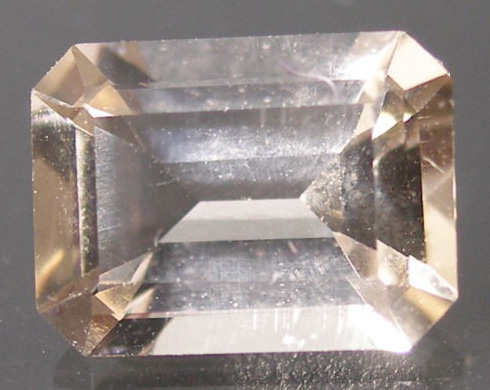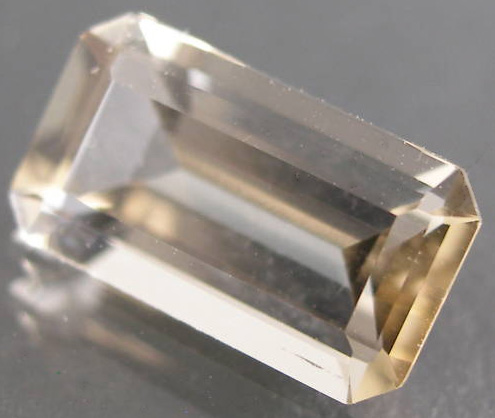Scapolite

Scapolite
(Weight: 1.21 carats)
Image © supplied by Woodmansee* Gems

Scapolite
(From Mozambique. Weight: 1.28 carats)
Image © supplied by Woodmansee* Gems
The name Scapolite is often used to describe a single type of gemstone but it is actually the name given to a group of minerals. This series of minerals with the name Scapolite includes Meionite, Silvialite and Marialite. These gems in the Scapolite series vary according to their composition; Marialite is rich in sodium chloride while Meionite is rich in calcium carbonate.
Scapolite History & Etymology:
Scapolite was first discovered in 1866. It is not recognized by the IMA. Scapolite derives its name from the two Greek words skapos and lithos. These two words literally translate into rod and stone respectively which refers to the stumpy size and nature of the Scapolite crystals.
Previously Scapolite was also known by the name of Wernerite but this name has been deprecated. Other names for Scapolite like Dipyre and Mizzonite have also been discontinued. Hence now the name Scapolite is widely used by gemstones experts and gemstone collectors.
Similarly the other name of Meionite has been derived from the Greek word meion which means less, given because of the small pyramidal shape of the crystals. Mizzonite also derives its name from a Greek word, meizon which translates to greater, given due to the larger axial ratio in comparison to Meionite. Marialite derives its name from Maria Rosa the wife of the German mineralogist G. vom Rath.
Scapolite Occurrence:
Scapolite is found in quite a few localities. However gemstone quality crystals of Scapolite are only found in Ningarhar and Badakhshan Provinces of Afghanistan. This locality produces high gemstone quality crystals of Scapolite which have a violet coloring. Colorless as well as pale blue colored crystals of Scapolite were also found in this locality.
Scapolite crystals were also found in Merelani Hills in the Lelatema Mountains in the Arusha Region in Tanzania. This locality yields pale yellow to straw yellow as well as dark yellow colored crystals of Scapolite.
Scapolite Properties:
Scapolite is composed of sodium calcium aluminum silicate carbonate chloride with molecular weight of approximately 877 grams. The dominant silicon in the composition of Scapolite crystals classifies the Scapolite mineral as silicates mineral. Scapolite display tetragonal and dipyramidal properties and Scapolite occur in their natural form as prismatic crystals which are massively striated and have flat pyramidal massive terminations. The crystalline masses of Scapolite are at least 1.5 m in size. do not display twinning.
The cleavages on the Scapolite crystals are distinct with irregular, conchoidal and uneven fracturing thus making the crystals quite brittle. Scapolite occur in colorless form as well as with white, violet, gray, blue, pink, yellow, orange-brown and brown coloring. However Scapolite with brown coloring are quite rare.
Scapolite can be transparent to translucent and sometimes even opaque. The rare and brilliant gemstones of Scapolite are extremely sought after by gemstone collectors and experts who pay at least hundred dollars per carat for the Scapolite crystals.
Back to the Gemstones List home page - over 160 gemstones explored!
Please feel free to link to this page - copy / paste the text below: (click to select)
Privacy Policy | Cookie Policy | GDPR | About This Site / Terms

© gemstoneslist.com 2018


